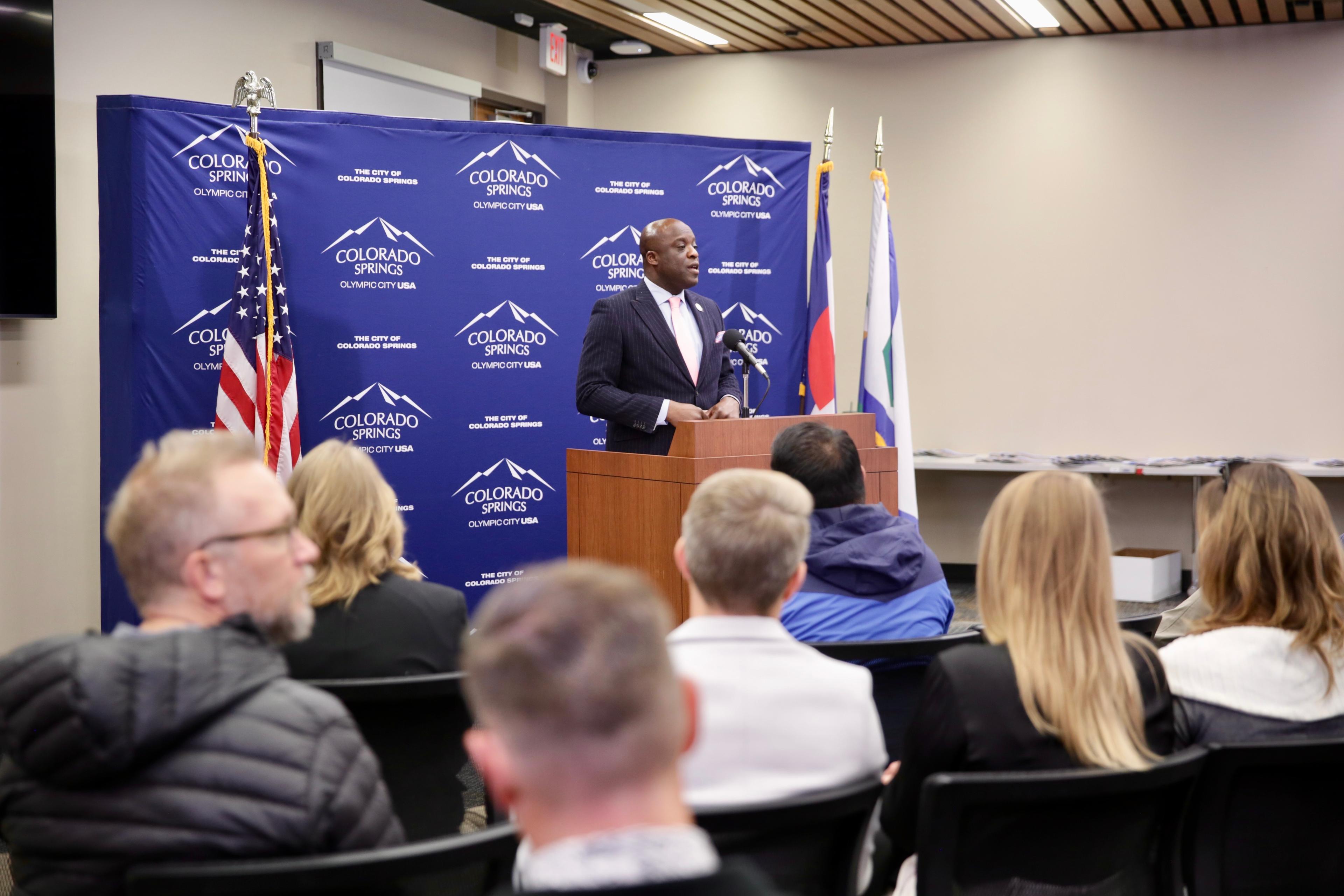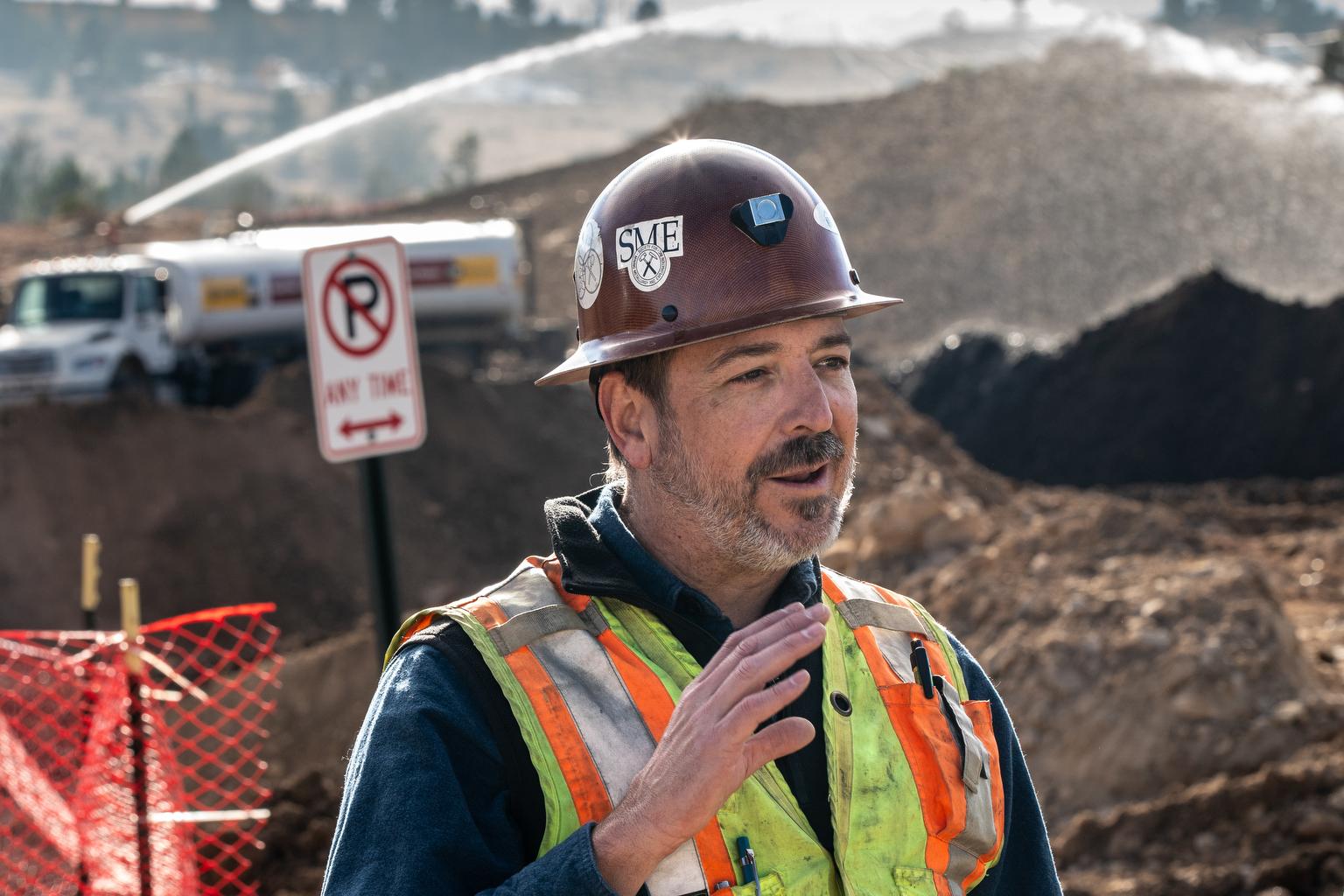
Telluride Bluegrass Festival.
It happens every morning of the four-day bluegrass jam session. Festival goers — aka the festivarians — make a mad dash from the gate to claim their spot for the day in front of the stage. The sound of bagpipes echoing through the small mountain town is the alert that the tarp run is about to commence.
Tarp runners typically pack light, with nothing but the clothes they’re wearing, running shoes on their feet and tarps in hand, waiting for the signal.
When “GO,” booms from a loudspeaker, the gates open and people rush onto the grounds with a bluegrass rendition of the “William Tell Overture” blaring over the PA system. They’ll fling open their tarps, staking claim over small patches of valued land.
A Tarp Is More Than A Placeholder
In that crowd is Scott Russell. The firefighter paramedic recently moved to Garland, Texas from Denver, but has attended the Telluride Bluegrass Festival nearly every summer since 2005. He’ll likely have been up since sunrise to prepare for the run; others camp overnight to get their place in line. When the moment comes, Russell has laser focus on grabbing his “primo spot” near the sound booth with easy access to the aisle.
More so than his strategy, it's Russell's tarp that stands out.
“In tarp world, everybody else has the vinyl tarps. They get hot and burn your legs and they get sticky when you spill your beer,” Russell says. “So I got a canvas one, a painter's canvas. Once it was a blank canvas in front of me, it drove me crazy -- it had to have some art on it.”
That was in 2008.

Friends have contributed to the artwork, Russell says, as have strangers. Sometimes, he doesn’t meet the people who draw on the tape.
"I’ve been gone and come back to see [the art],” he says. “But for a lot of it, [the people who draw] spend time on the tarp, so I get to meet them."
Those strangers might become friends for the remainder of the four-day festival.
A Long-Standing Tradition And Institution
Dan Sadowsky, who emceed the festival from 1978 to 2006 and is known by regulars as Pastor Mustard, describes the tarp run in the bluegrass festival’s book as “a fury of sinew and skill exploding from the gate, running like a midnight shower rain or express passenger train for the sweet square of real estate that will be theirs for that day only.”
How the 30-plus-year tradition began, is a bit of a mystery.
Craig Ferguson, the president of Planet Bluegrass, the Lyons-based producer behind several Colorado music festivals, including Telluride Bluegrass, certainly can’t recall how it started.
“Although, there [are] legends,” he muses. “The summer solstice topless run has to be my personal favorite” -- the bluegrass festival happens every year during the summer solstice.
Over the years, the tarp run has gotten very competitive. Sometimes there are wipeouts as people rush to call dibs. This has left some festivarians with bumps and bruises or sprained ankles. Nothing too serious, Ferguson assures. He marvels at the dedication brought to the event and says it sometimes feels like you’re watching a professional sporting event.
"It's such a charge to watch it from the stage or elsewhere,” Ferguson says.
While about 1,000 people will line up for the tarp run each morning, a Planet Bluegrass spokesperson says they expect 11,750 at the 44th edition of the Telluride Bluegrass Festival. According to the Telluride Tourism Board, that kind of foot traffic generated a yearly average of $12.6 million in revenue in recent years. The tourism board estimates the total economic impact around $34.7 million.
Town manager Greg Clifton says the bluegrass festival is an “institution in Telluride that’s part of the culture here.” But that kind of influx of people visiting a community with a year-round population of nearly 2,400 comes with some challenges.
“Being a small community with a two-lane road, our streets quickly fill up with parking,” Clifton says. “In fact, the town has to institute a barricade on the access road every year at this time.”
There’s also infrastructure issues like water and wastewater. But after hosting this festival — and several others — for decades, Clifton says there are systems in place to accommodate all of these things.
As for Russell, the firefighter paramedic, he says he’s excited to go back to Telluride with his canvas tarp and a fresh stock of markers for anyone to add to the artwork. He’ll even be able to enjoy another off-kilter tradition: the marshmallow fight during the Yonder Mountain String Band set.










